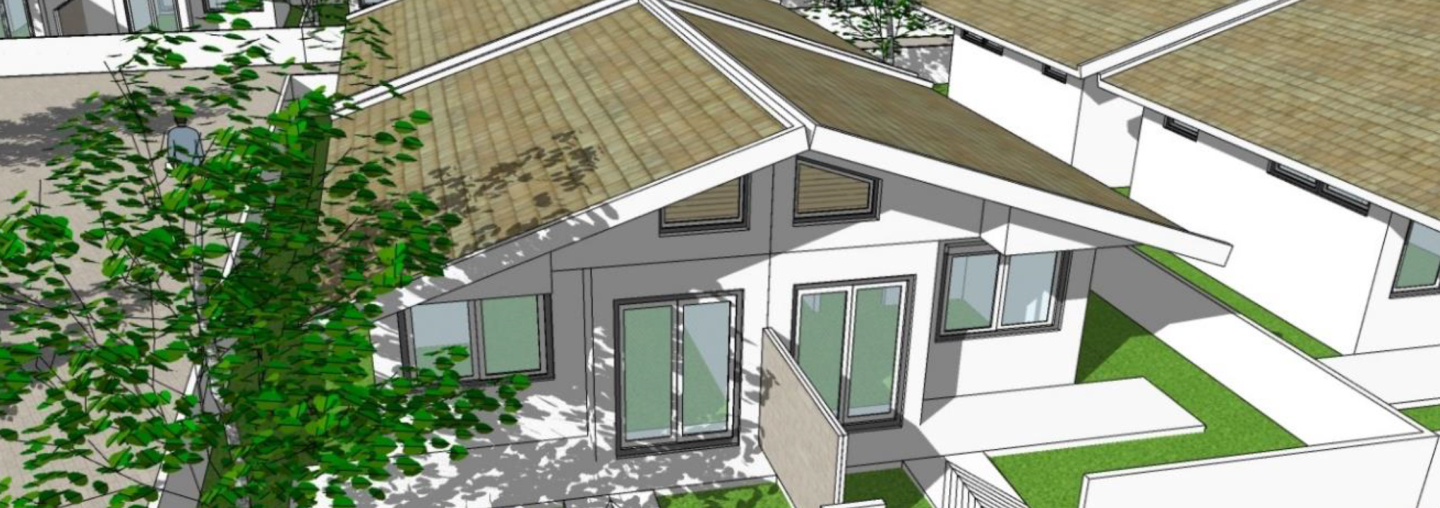
Chainat elderly Housing Project
Assist. Prof. Dr. Paikarn Raksasutiphan
Introduction :
The Ministry of Social Development and Human Security’s 20-year residential development strategy (2017-2036) was approved on September 12, 2017. The strategy includes the “Housing for All” policy, which aims to provide all Thai citizens with a universal place to live, providing a balanced and healthy environment to promote the happiness of society. As the aging society in Thailand progresses, by 2031 it will be known as the “Super Elderly Society” with 28% of the population being elderly. Therefore, it is important to prepare for the elderly in various aspects such as health, economics, psychological conditions, and home living. Research conducted by the Foundation of Thai Gerontology Research and Development Institute has found that the elderly’s daily lives are greatly affected by their home environments. The survey of the elderly population aged 80 years and over reported that 18% had an upstairs bedroom, 47% used a squat toilet, and 7% used to fall inside the house. Most of these falls were caused by inappropriate living environments which were the same environments they used to live in when they were younger and could take care of themselves.
Thus, designing a house for the elderly needs to consider changes in their physiology, such as reduced vision, diminished hearing, decreased memory, and slower movement. The principle of Universal Design should be applied to improve the design to meet the needs of all groups of people. To address these requirements, a housing project for the elderly in Chainat Province has been established with the cooperation of the Housing Authority and Rangsit University. The project layout emphasizes airiness, more green areas, and wider thoroughfares. The layout also includes necessary facilities inside the house, with two types of designed houses, a one-story twin, and a two-story twin where the upper floor is prepared for the elderly’s relatives who come to visit them. Furthermore, the accommodation section includes an open plan layout design with elements that promote safety, such as handrails in various points, rounded corners on furniture, leveled flooring to prevent stumbling, and spacious bathrooms with sliding doors for wheelchair accessibility.
Objectives:
1. To develop and support standardized housing for the elderly in the community of Muang Chainat
2. To design a house that is suitable living for the elderly
3. To prepare the physical environmental for the good quality of life to the elderly
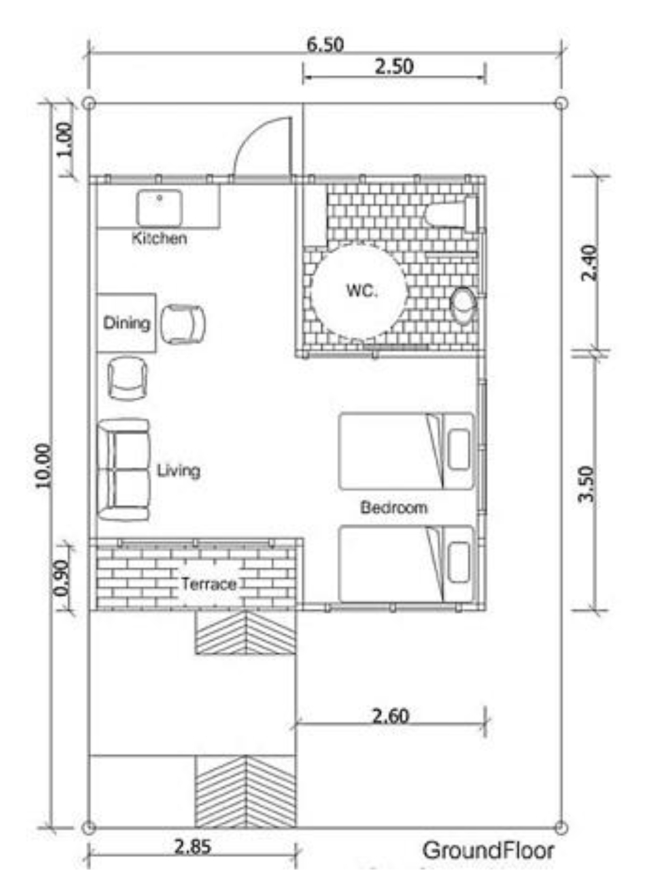
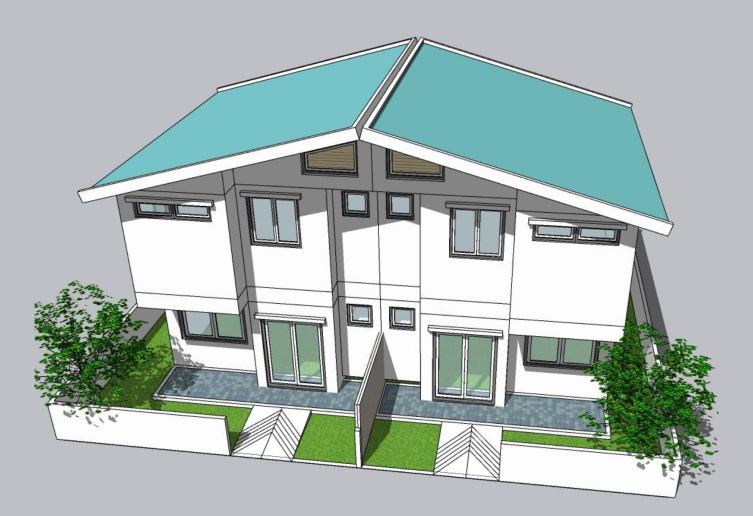
Methodology:
1. Study the housing needs of the elderly Chainat Province by collect data from the Chainat government policy
2. Study the standards of 6 standards for elderly homes, such as Building and Facilities, Living Quarters, Health and Environment, Service Providers and Management.
3. Analyze the collected data and design a photo type of housing suitable for Chainat elderly
Techniques and Materials:
It is an architectural design that focuses on Universal Design to meet the needs of every group of people.
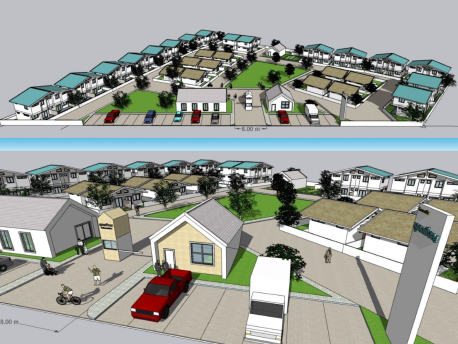
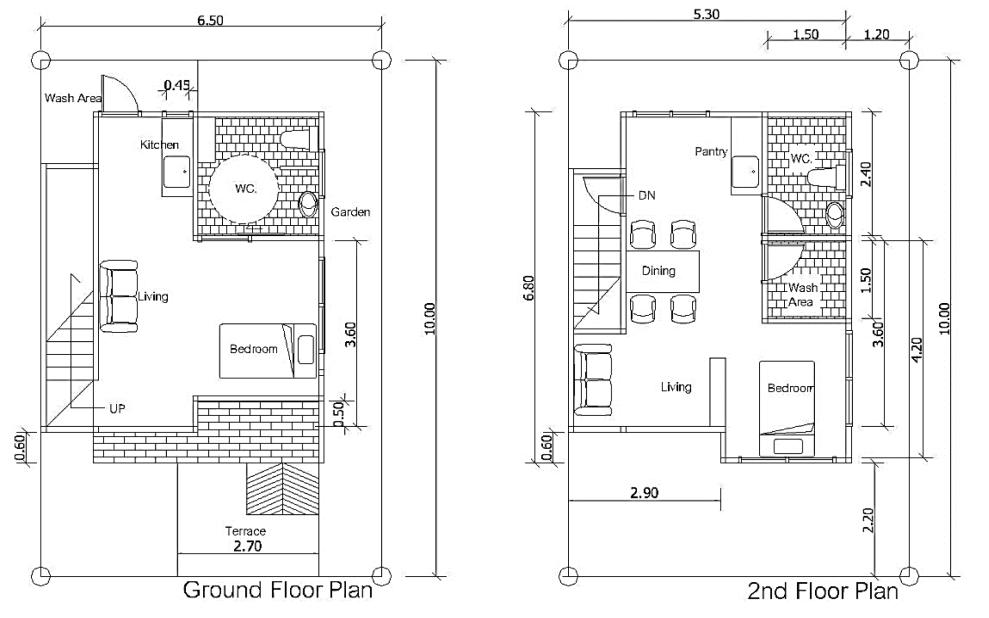
Conclusion:
The project layout emphasizes in airiness, more green areas and wide thoroughfares. Additionally, the layout also includes necessary facilities within the house. Two types of houses have been designed, a one-story twin and a two-story twin with the upper floor will be prepared for elderly relatives who come to visit. Furthermore, there is an open plan layout design within the accommodation section. This section includes elements that promote safety, such as handrails in various points, rounded corners of furniture, eliminating the difference in floor level to prevent stumbling and falling, and spacious wide bathrooms with sliding door for wheelchair accessibility. However, the problems encountered were found to have a social dimension, and the local culture of Chainat Province, such as the prevalence of extended families living together and the cost of living, may impact the lifestyle that affects the design of housing for the elderly.
References:
Chompunut Phromphak. (2013). Aging society in Thailand. Academic Office, Secretariat of the Senate, 3(16), 1-19.
Ministry of Social Development and Human Security. (2016).
Department of Older Persons. Statistical data on the number of the elderly Thailand 2016: information as of December 31, 2016.
National Housing Authority, (2021). Full Report : Competency Promotion Program for Local Administrative Organizations Under the project of developing a housing development plan and a plan to prevent / solve slum problems Fiscal Year 2020-2021.
Thai Gerontology Research and Development Institute. (2016). “Report on the Situation of the Thai Elderly 2016, Dr. Bunluu Siripanich, President of the Foundation of Thai Gerontology Research and Development Institute” 2016